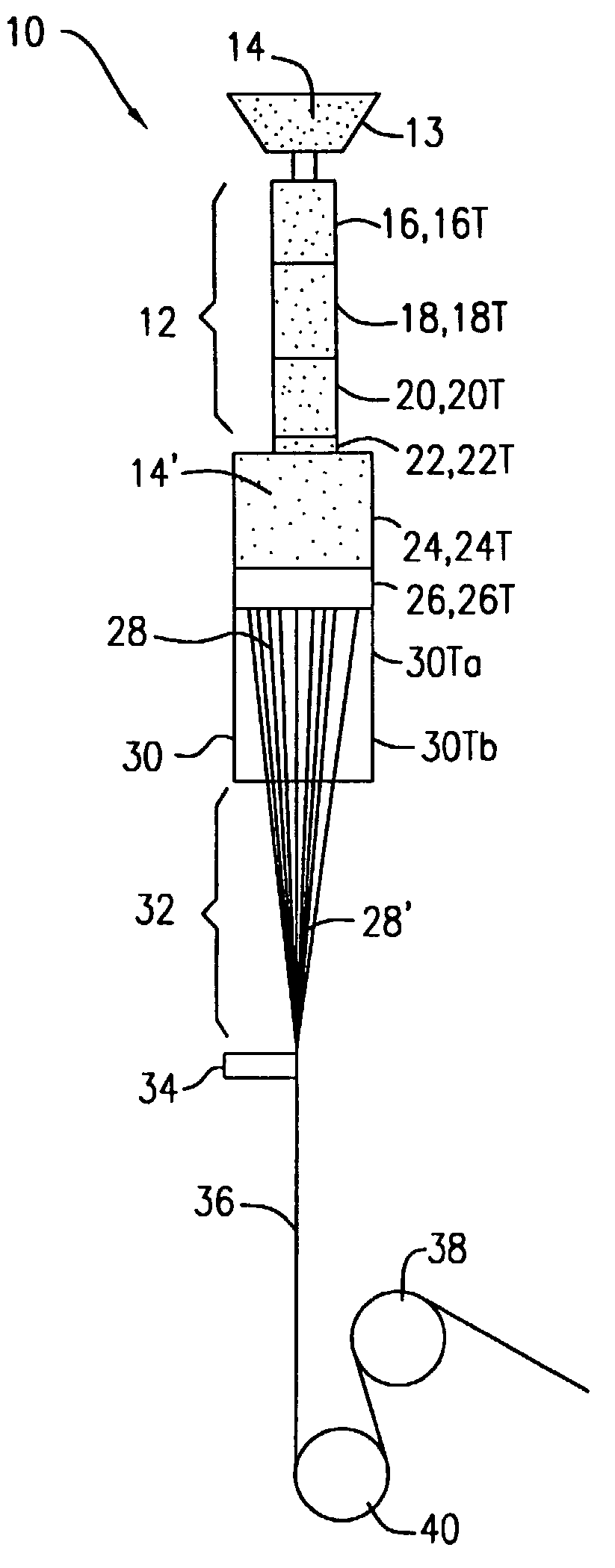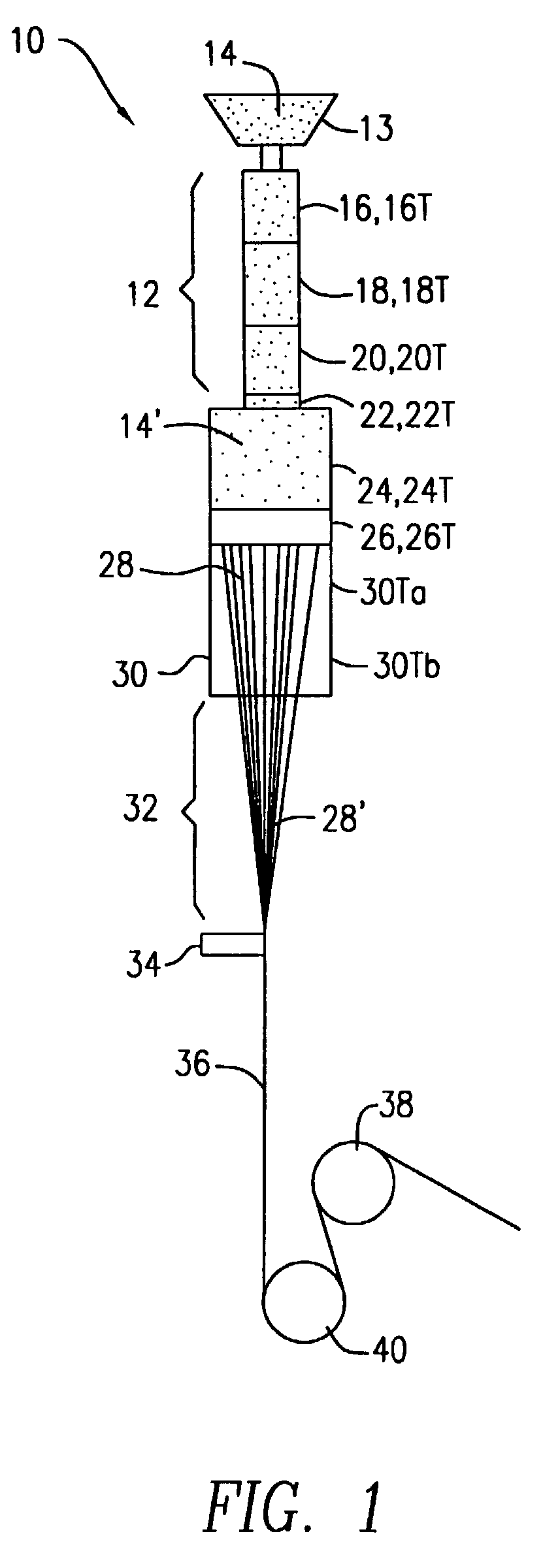Process for the formation of high strength bio-absorbable suture fibers
a multi-filament, high-strength technology, applied in the direction of filament/thread forming, melt spinning methods, surgery, etc., can solve the problems of reduced handling characteristics of sutures, increased stiffness, poor knot security,
- Summary
- Abstract
- Description
- Claims
- Application Information
AI Technical Summary
Benefits of technology
Problems solved by technology
Method used
Image
Examples
examples
[0034]Eight examples of the process of the present invention and four comparative examples of the existing process (discussed hereinabove) were performed and are discussed hereinafter.
[0035]Initially, it is noted that for all twelve of the examples, a copolymer of about 90 mole percent PGA and about 10 mole percent PLA, which has a CMP of about 200° C. was used to produce filaments and, thereafter, bio-absorbable multifilament sutures. The CMP was determined by the above-discussed standard DSC method at a heating rate of 20° C. per minute in nitrogen and using a sample of about 5-10 milligrams in size, In addition, except for the heated sleeves 30 and the various temperatures 16T, 18T, 20T, 22T, 24T, 26T, 30Ta, 30Tb, the extruder apparatus 10 and the process conditions were substantially the same for all twelve examples. For example, the spinneret 26 had capillaries of 0.305 millimeters in diameter and an L / D ratio of 7:1.
[0036]The take up speed for the as-spun filaments was fixed a...
PUM
| Property | Measurement | Unit |
|---|---|---|
| temperature | aaaaa | aaaaa |
| melting point | aaaaa | aaaaa |
| melting point | aaaaa | aaaaa |
Abstract
Description
Claims
Application Information
 Login to View More
Login to View More - R&D
- Intellectual Property
- Life Sciences
- Materials
- Tech Scout
- Unparalleled Data Quality
- Higher Quality Content
- 60% Fewer Hallucinations
Browse by: Latest US Patents, China's latest patents, Technical Efficacy Thesaurus, Application Domain, Technology Topic, Popular Technical Reports.
© 2025 PatSnap. All rights reserved.Legal|Privacy policy|Modern Slavery Act Transparency Statement|Sitemap|About US| Contact US: help@patsnap.com



